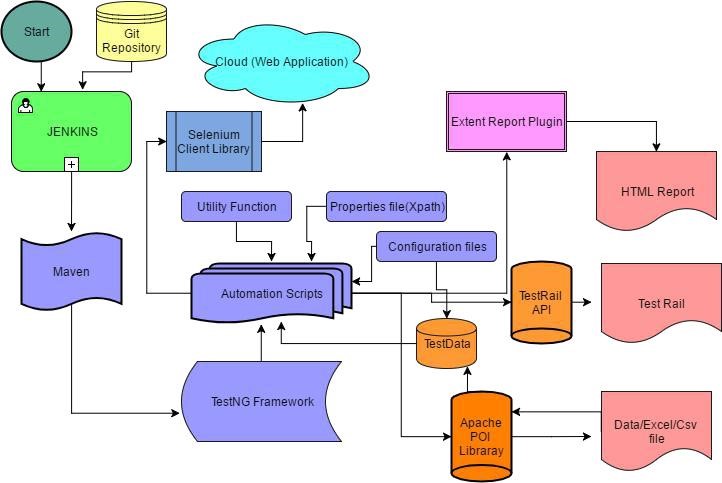Cloud Test Automation Using Selenium
Read about cloud automation testing using the Selenium testing framework, including the features and benefits of Selenium for both manual and automation testers.
Join the DZone community and get the full member experience.
Join For FreeCloud testing is a means of testing cloud-based applications that use resources found in the cloud. By resources, we mean any element (hardware, software, and infrastructure) necessary to carry out the tests. Cloud testing provides an end-to-end solution that transforms the way testing is done and can help an organization boost its competitiveness by reducing the cost of testing without negatively impacting mission-critical production applications. By leveraging a cloud computing solution for testing, organizations can shorten provisioning time because the cloud enables provisioning of test servers on demand. This helps ensure unused servers are not sitting idle. Generally, more than 80% of the validation processes are repetitive, with testers performing same testing steps manually in each new build.
Why Selenium?
The reason for the popularity of Selenium can mainly be attributed to the flexibility and perfection achieved through the tools it offers. It is compatible with a wide variety of browsers and offers great flexibility to write text scripts as well. Furthermore, Selenium provides robust support to a variety of programming languages, including C#, Java, Python, and Ruby. Even just a basic knowledge of any of this language is enough to work with Selenium. Here below we would have a look at the key benefits of the tool.
- Cost effective: It is an open source tool.
- Language: Supports many languages like Java, Ruby, Python, and C#.
- Browser: Supports multiple browsers like IE, Mozilla, Opera, Chrome, and Safari so can be used for cross-browser testing and can be integrated easily to the newly launched browser.
- Framework: Supports multiple frameworks like JUnit, TestNG, Bromine, NUnit, and RSpec, which make the automation more robust and can developed own framework.
- Operating System: Supports multiple operating systems like Windows, Mac, and Linux.
- Time-Saving: With the help of Selenium grid, parallel execution of the test cases can be done.
Cloud Automation Testing Using Selenium
Today’s software applications are mostly web-based, and with the cloud infrastructure gaining prominence, they are mostly deployed on cloud servers.
Selenium is arguably the most widely used open source solution to meet the needs of your testing project. Selenium can be successfully used with cloud services to test web apps across multiple browsers and platforms. Selenium interacts with web browsers to test actions, inputs and expected outcomes to improve device and platform coverage.
Automation Framework for Cloud Testing
An automation framework is a strategy for automation, which provides a structured way for automation for obtaining the quality work with quantity and effectiveness. There are many predefined frameworks in Selenium like JUnit, TestNG, NUnit, etc.
Selenium Data Driven Framework Approach
Selenium Data Driven Framework is an implementation of function modularization and abstraction layer. It’s an excel based automation framework. It has 3 layers:
- External Layer (Test Case Layer).
- Application Function Layer (consists of application-related functions).
- Framework Layer (consists of core framework functions).
All the test cases will reside in the external layer and call the function from the Application Function Layer, and it will invoke framework layer function. This framework is Excel-based and all test cases and test data will reside in single Excel file, which makes this framework easier to manage. The user can choose test cases which they want to execute it from the Excel file and also can provide their test data there.

Features of a Selenium Data Driven Framework
- Works extremely powerfully with different browsers such as Mozilla, Chrome, and Opera
- VSDDF is a Maven-based framework so the user does not worry about dependency management.
- Execution can be triggered with one click either from Jenkins or locally.
- Execution can be triggered automatically using Jenkins when any changes are made in the BitBucket/Git code.
- VSDDF provides a feature for uploading test results to Test Rail (test management tool) using Test Rail APIs.
- Detailed report generation includes application logs, line and bar graphs, platform details, test execution details such as the number of passes, the number of fails, total test cases, each test case with line by line test steps, screen shot at the time of failure, etc.
Benefits of a Selenium Data Driven Framework
- Since scripting is done with Excel, it is simple to create test cases. Even a manual tester can write test cases once he knows about customized methods and how to trace elements from the application.
- Manual test cases and automation test cases can be maintained in the same sheet.
- Highly productive and scalable.
- Cost effective since it reduces man efforts.
Published at DZone with permission of Ankit Gupta. See the original article here.
Opinions expressed by DZone contributors are their own.

Comments